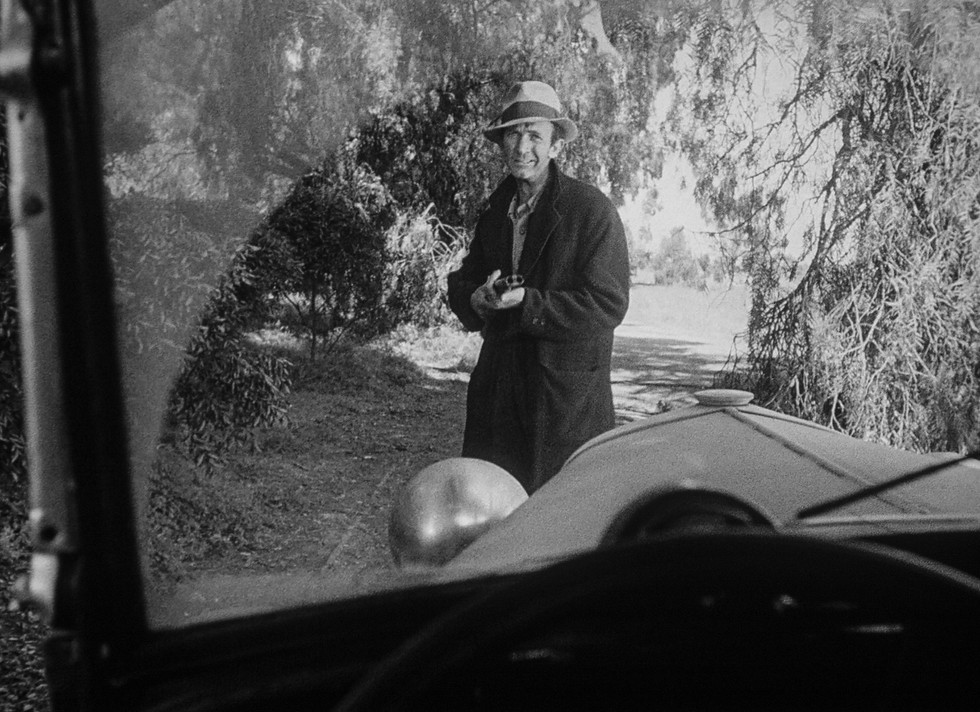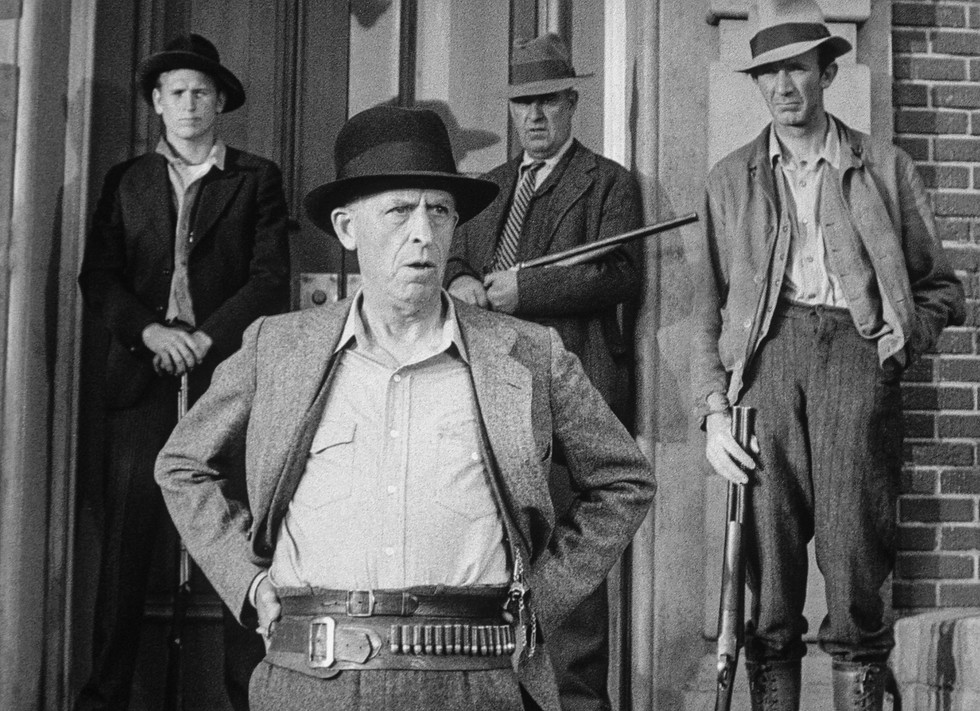Fritz Lang’s first American film – “Fury” – Warner Archive Collection
- Mike Reynolds
- Feb 13, 2022
- 4 min read
Updated: Mar 3, 2022
BLU-RAY REVIEW / FRAME SHOTS

Spencer Tracy stars as mechanic Joe Wilson and Sylvia Sidney plays his fiancée, Katherine Grant, who leaves Chicago for a better paying job in California.
(Click on an image to scroll through the larger versions)
“FURY” – WARNER ARCHIVE COLLECTION
Blu-ray; 1936; Not Rated
Best extra: Commentary track with writer/director/critic Peter Bogdanovich
GERMAN DIRECTOR Fritz Lang (“Metropolis,” “M”) cast Spencer Tracy near the start of a legendary career, as mechanic Joe Wilson, saving to marry his sweetheart, Katherine Grant, (Sylvia Sidney). She’s forced to find employment in California, leaving Joe in Chicago with his three brothers as they independently work on their nest egg.
After some time, Joe and the brothers find success and he makes his way out to California by car to marry her.
Outside of a small California town, Joe is accosted by a shotgun-wielding deputy (Walter Brennan), who hauls him to jail as a suspect in the kidnapping of a child. Circumstantial evidence and Joe’s reluctance to involve his fiancée put him on the spot. Gossip fuels the town’s enmity and soon a drunken mob is formed, led by Bruce Cabot of “King Kong” fame, to crash the jail and mete out lynch law on Joe.
In spite of the valiant efforts of the sheriff and his deputies, the jail is overrun and set afire. When the mob finds that they cannot unlock Joe’s cell, they dynamite the place right in front of Katherine, who’s made a mad dash to help.
(1) “Fury” opened June 5, 1936, which marked the first American film for director Fritz Lang. (2-4) Joe and Katherine say their goodbyes at the Chicago train station. “I’ll come for you soon,” says Joe. “Soon, Joe. Soon,” says Katherine.
Joe is assumed to have been burned to death in the fire and explosion, along with his dog. IMDb says the dog, Terry, is the same terrier known as Toto from “The Wizard of Oz” (1939).
After a few days, the actual perpetrators of the kidnapping are brought to justice. The District Attorney (a slick Walter Abel) files charges of first-degree murder on 22 members of the lynch mob. Then Joe shows up at his brother’s house, metaphorically smoldering in “Fury.” He’d like nothing better than to see the mob hang for what they did to him.
In his feature-length commentary, Peter Bogdanovich recalls how the tragedies of kidnapping were much on the American mind. Four years previous, the infamous Lindbergh kidnapping case took the life of the aviator’s child. Three years before “Fury’s” release, an heir to a department store business was kidnapped and killed in San Jose, California.
In the San Jose case, two men were arrested and confessed to the crime. One night in November, a crowd of some 6,000 broke into the jail they were being held in. They were taken to the park across from the courthouse and hanged. This was all covered by live radio and newspaper. Participants and spectators were bussed in from nearby San Francisco. Writer Norman Krasna, aware of the two cases as was anyone in the 1930’s who could read, pitched an idea to screenwriter Joseph Mankiewicz, which turned into Lang’s first American film. Lang originally wanted to do a story where the central character is guilty, but, at that time, it was a no-go for MGM. He was also forced to make other changes.
(1&2) After a year, Joe and his brothers, Charlie and Tom, have opened a gas station and Joe finally leaves for California with his dog Rainbow (Terry). (3&4) Joe is stopped near the town of Strand, California by deputy sheriff “Bugs” Meyers (Walter Brennan). He’s arrested for the kidnapping of a local child, because of circumstantial evidence. Bits of salt and peanut husks were found with the ransom letter and a bag of peanuts was found in Joe’s pocket. Plus a car involved in the kidnapping had Illinois plates.
About 14 years later, “The Sound of Fury” (1950, reissued as “Try and Get Me”) was released starring Frank Lovejoy and Lloyd Bridges, directed by Cy Endfield from a script by Joe Pagano based on his novel. “The Sound of Fury” is a much more chilling representation of the California lynching and certainly a bit more accurate.
Bogdanovich mentions a small preference for Sylvia Sidney over Bette Davis, her contemporary. I will say that I haven’t seen all that many Sylvia Sidney performances, but she really immersed herself here. Davis could have done it, but you’d still have known you were watching Bette Davis.
VIDEO/AUDIO
Warner Archive’s 1080p transfer (1.37:1 aspect ratio) is sourced from a new 4K scan of various negatives. The picture is dark, but clear with that good old German Expressionism sneaking its way into the MGM flick. There are plenty of shadows, and deep, inky blacks and explosive whites. Film grain takes turns being heavy and light depending on the source.
The DTS-HD 2.0 Master Audio occasionally suffers from age-related source issues with a touch of hiss and crackle. Sound is evenly split between speakers, but there's a lot going on: Big crowd scenes and people constantly talking over each other. I was grateful for subtitles.
(1&2) Town gossips learn about the arrest and assume Joe is one of the four suspects in the kidnapping of Helen Peabody. (3&4) A mob shows up in front of the jail as Sheriff Hummel (Edward Ellis) and his men watch guard.
EXTRAS
There’s only one – the commentary track with writer/director/critic Peter Bogdanovich featuring excerpts of taped interviews with Fritz Lang. In the early 1960’s, Bogdanovich conducted a series of interviews with some of the great directors, among them, Lang. Bogdanovich’s take on “Fury” and how it was put together is artfully blended with Lang’s reminiscence of his first film for American audiences at MGM.
I would be remiss if I didn’t say something about race and the themes of this film. Mention is made that, up until the release of “Fury,” several thousand people were lynched by mob in the United States. In this film, almost all the characters are white – certainly all the major ones. We might draw the conclusion that “Fury” certainly did have an effect on the frequency and overall number of lynchings ...
Of Caucasians.
— Mike Reynolds
(1&2) The mob overtakes the jail and Joe prepares to defend himself. (3&4) The mob sets fire to the jail.
(1-3) The mob watches as the flames surround Joe. (4) Katherine arrives at the scene and collapses.











































Comments